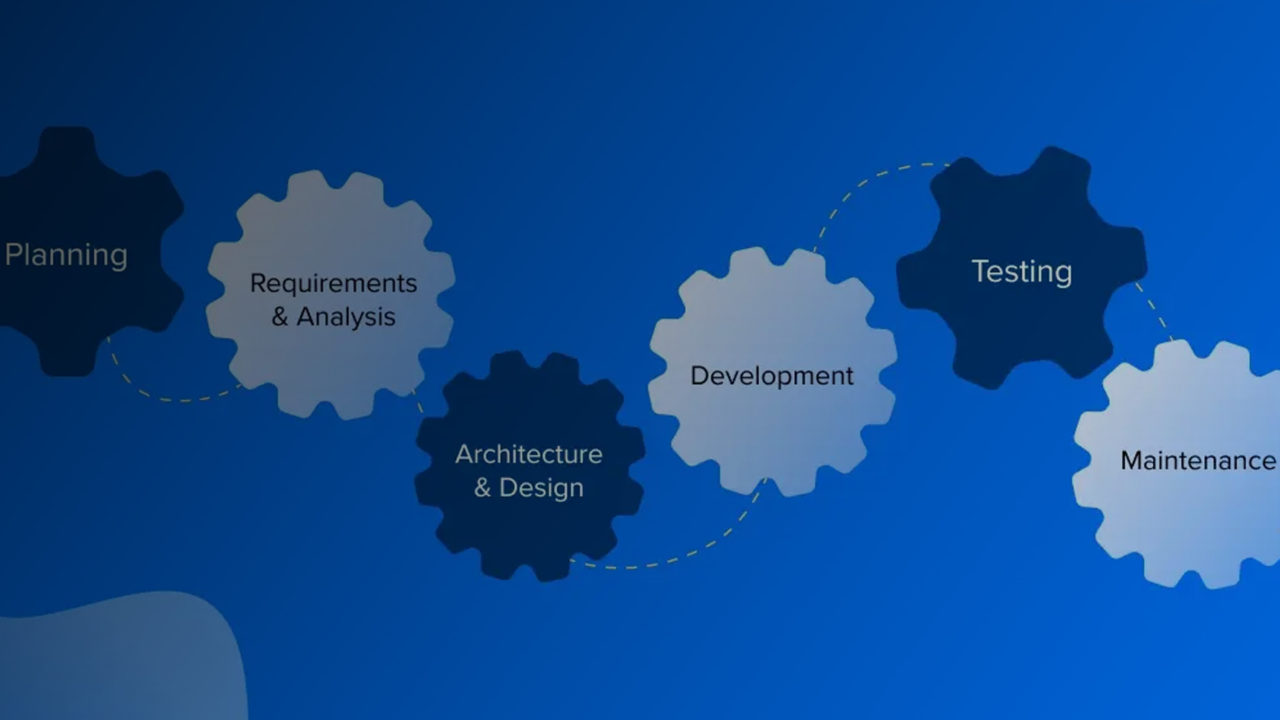Introduction.
The Software Development Life Cycle (SDLC) is the cornerstone of every successful software project. It offers structure and direction, ensuring that software is developed systematically with an emphasis on quality, reliability, and efficiency. In this comprehensive guide, we will take a deep dive into every facet of SDLC, explore its various phases, methodologies, and best practices, and emphasize the crucial role of testing in the software development process.

Section 1: Understanding the SDLC.
1.1 What is the SDLC?
The SDLC, or Software Development Life Cycle, is a systematic and structured approach to software development. Its primary goal is to deliver high-quality software that meets user needs while staying within budget and schedule constraints. This methodical framework ensures that each phase of development is thoroughly planned, executed, and reviewed.
- Definition and Importance: We’ll begin by defining the SDLC and explaining its pivotal role in modern software development.
- The Iterative Nature of the SDLC: We’ll explore how the SDLC is an iterative process, allowing for flexibility and adaptation as the project unfolds.
1.2 The Phases of SDLC
The SDLC encompasses a series of distinct phases, each with its own specific purpose and activities. These phases are essential for guiding the development process, ensuring that software evolves from concept to a fully functional product.
- Requirement Analysis: We’ll dive into the initial phase where requirements are gathered and analyzed to establish the foundation of the project.
- Planning: This phase is all about setting project goals, defining the scope, and creating a roadmap for development.
- Design: Detailed design planning, including architecture and user interface design, is vital for project success.
- Implementation: We’ll discuss the actual coding and development phase.
- Testing: This phase is crucial and will be explored in more detail later.
- Deployment: How to deploy the software into the target environment.
- Maintenance: The post-launch phase, focusing on updates, bug fixes, and ongoing improvements.
Section 2: SDLC Methodologies.
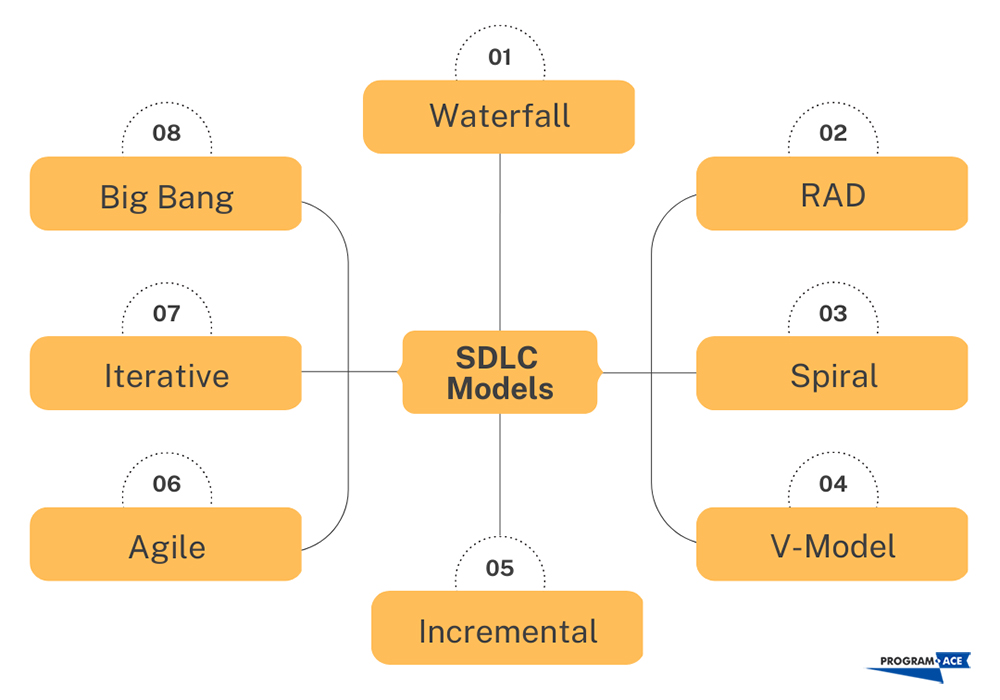
2.1 Waterfall Model
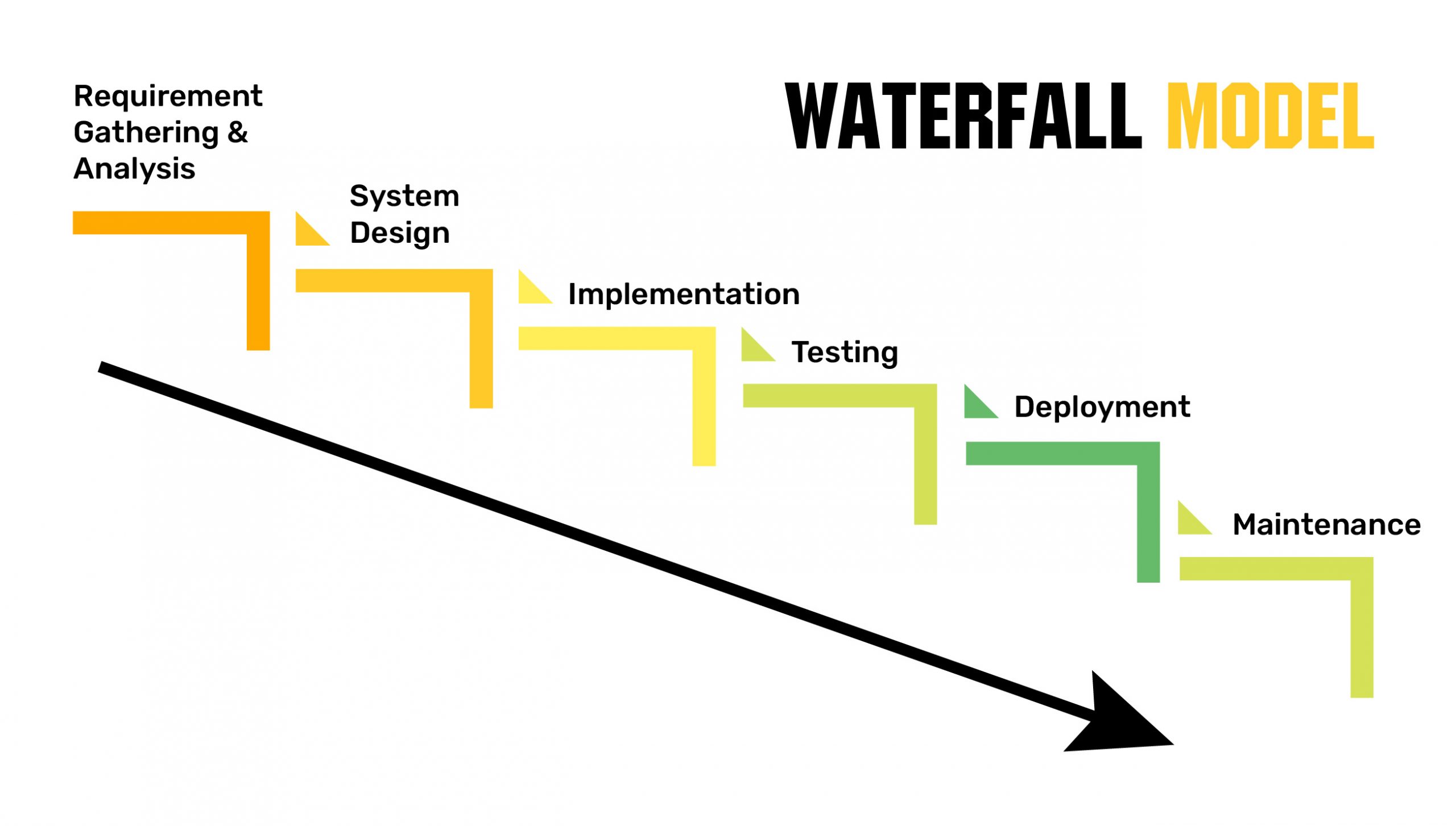
The Waterfall model is a traditional approach to software development, characterized by its sequential nature. We’ll discuss the pros and cons of this method and when it’s most suitable for a project.
- Sequential Approach: Exploring how each phase follows the previous one in a linear fashion.
- Advantages and Limitations: We’ll highlight the benefits and challenges of the Waterfall model.
Characteristics:
- Sequential approach.
- Well-defined phases (requirements, design, implementation, testing, deployment, maintenance).
- Progress flows in one direction, like a waterfall.
Pros:
- Clear structure and documentation.
- Well-suited for small projects with stable requirements.
- Easy to manage and understand.
Cons:
- Inflexible to changing requirements.
- Lengthy development cycles.
- High risk of late-stage errors.
Use Case Example: Building a simple static website where requirements are clear and unlikely to change.
2.2 Agile Methodology
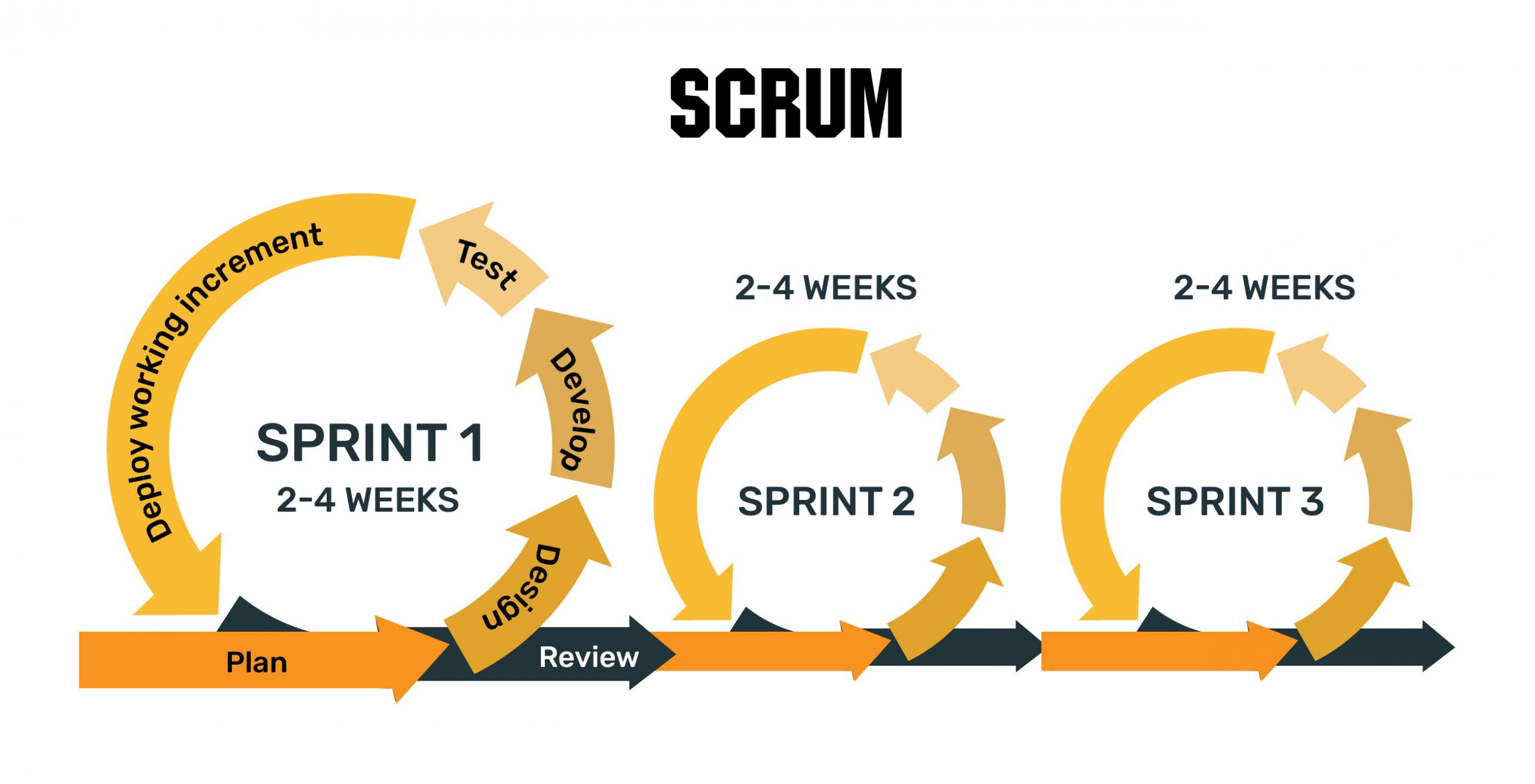
Agile is a modern, flexible approach to software development that emphasizes adaptability and collaboration. We’ll delve into various Agile methodologies such as Scrum, Kanban, and Extreme Programming (XP).
- Iterative and Flexible: Discussing how Agile allows for frequent iterations and changing requirements.
- Different Agile Methodologies: Exploring the characteristics and use cases of Scrum, Kanban, and XP.
Characteristics:
- Iterative and flexible.
- Collaborative approach.
- Scrum, Kanban, and Extreme Programming (XP) are common frameworks.
Pros:
- Adaptable to changing requirements.
- Frequent feedback and collaboration.
- Faster delivery of usable increments.
Cons:
- Requires active involvement from all team members.
- Complex to manage in large projects.
- Less comprehensive documentation.
Use Case Example: Developing a mobile app with evolving features and user feedback-driven improvements.
2.3 V-Shaped Model
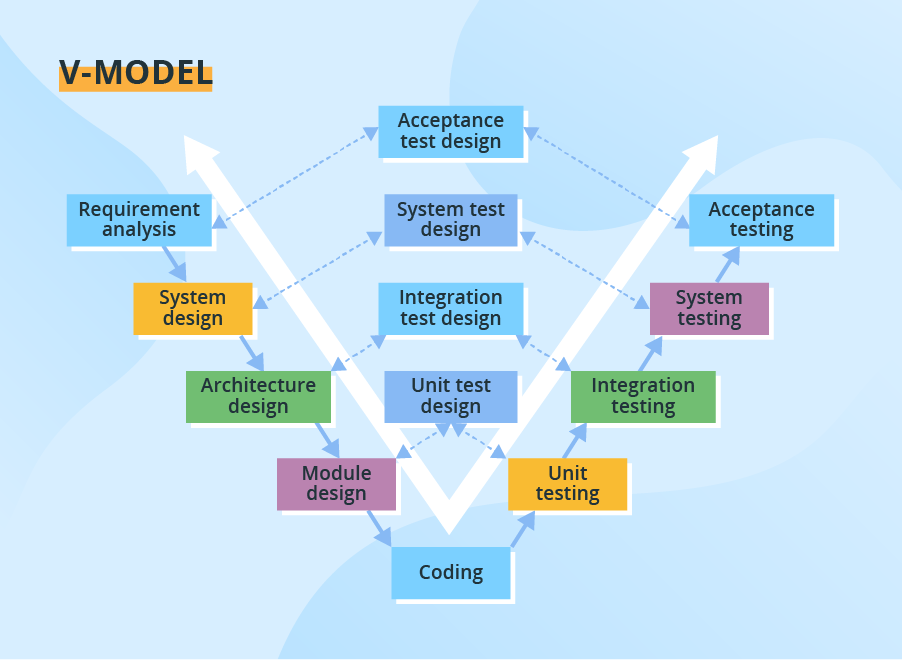
Characteristics:
- A sequential model.
- Emphasizes testing in parallel with each development phase.
Pros:
- Rigorous testing at each phase.
- Reduces post-development defects.
- Suitable for mission-critical applications.
Cons:
- Prone to delays in testing phases.
- Limited adaptability to changing requirements.
- Higher initial project planning.
Use Case Example: Developing a medical software system where rigorous testing at each stage is critical for safety.
2.4 Spiral Model
Characteristics:
- Combines iterative and waterfall elements.
- Emphasizes risk analysis and mitigation.
Pros:
- Frequent iterations and risk assessment.
- Good for large, complex projects.
- High flexibility to incorporate changes.
Cons:
- Requires experienced project management.
- Potentially higher development cost.
- Longer development cycles.
Use Case Example: Creating a complex software system for a space mission, where risk management is paramount.
2.5 Rational Unified Process (RUP)
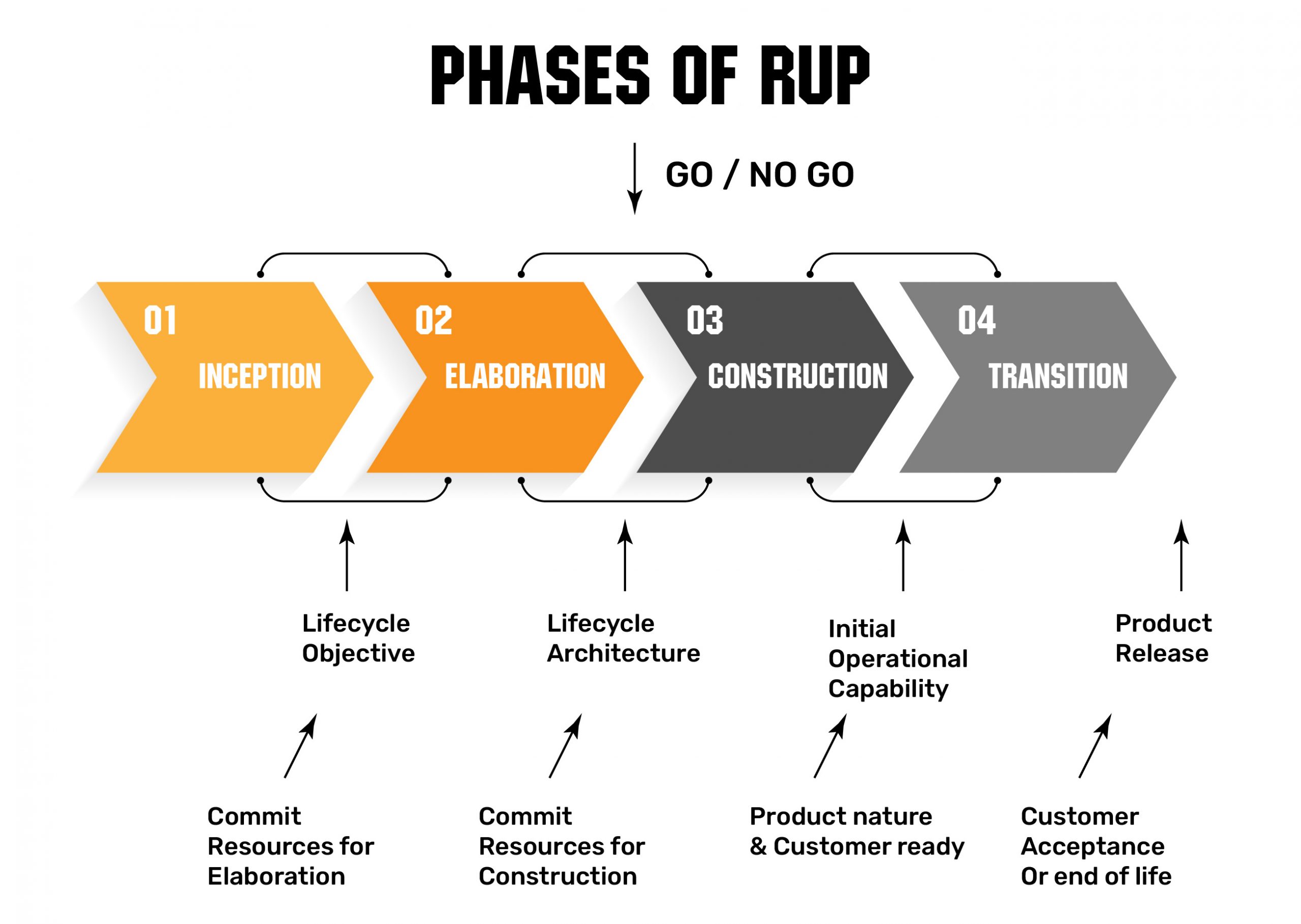
Characteristics:
- Iterative and adaptable.
- Focuses on architecture and design.
Pros:
- Comprehensive documentation and design.
- Suitable for large and complex projects.
- Emphasizes risk management.
Cons:
- Requires significant upfront planning.
- Can be overly bureaucratic for small projects.
- Slower for projects with changing requirements.
Use Case Example: Developing an enterprise-level software solution with a focus on architecture and design.
2.6 Prototyping Model
Characteristics:
- Rapid creation of a prototype for user feedback.
- Iterative development.
Pros:
- Valuable for understanding user requirements.
- Early identification of design flaws.
- Faster development based on user feedback.
Cons:
- May lead to an unclear final product.
- Additional time and effort for building prototypes.
- Not suitable for large-scale projects.
Use Case Example: Designing a user interface for a mobile app, where user feedback is crucial for a seamless experience.
2.7 Rapid Application Development (RAD)
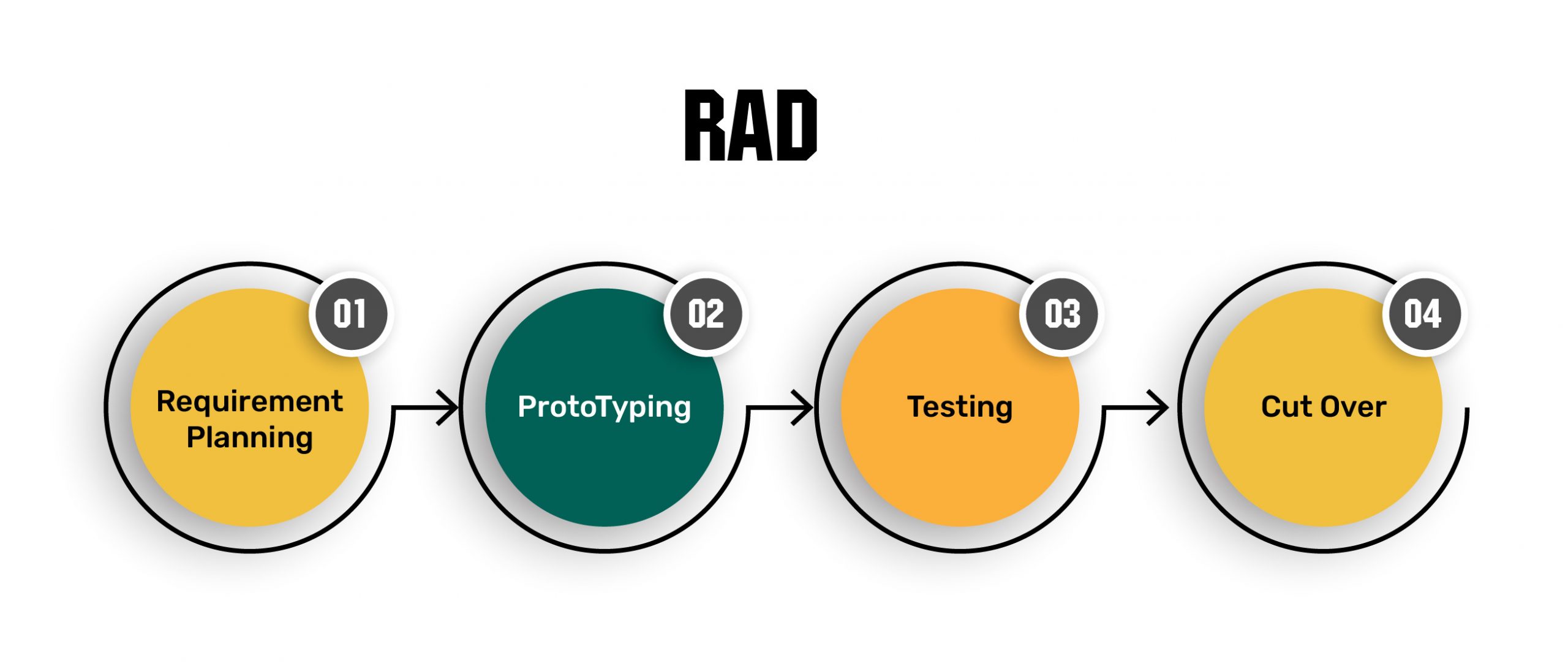
Characteristics:
- Emphasizes rapid prototyping and quick development.
- Collaborative approach.
Pros:
- Fast development and prototyping.
- Strong user involvement and feedback.
- Suitable for small to medium-sized projects.
Cons:
- Limited scalability to large projects.
- Can be costly due to the rapid development process.
- Quality may suffer with very short development cycles.
Use Case Example: Creating a customer relationship management (CRM) system for a startup that needs quick implementation and adaptation to customer needs.
2.8 DevOps (Development and Operations)
DevOps is a methodology that bridges the gap between development and operations. We’ll look at how DevOps promotes continuous integration and continuous delivery (CI/CD), leading to more efficient and reliable software development.
- Bridging Development and Operations: Discussing the importance of collaboration between these traditionally separate domains.
- Continuous Integration and Continuous Delivery (CI/CD): Exploring the principles and benefits of these practices.
Characteristics:
- Emphasizes collaboration between development and IT operations.
- Focuses on automation and continuous integration/continuous delivery (CI/CD).
Pros:
- Accelerates software development and deployment.
- Improved communication and collaboration between teams.
- Consistent, automated, and reliable release processes.
Cons:
- Requires a cultural shift and collaboration across teams.
- Initial setup and tool adoption can be challenging.
- Security concerns in automated deployments.
Use Case Example: Implementing DevOps in a cloud-based application where rapid updates, automated testing, and continuous deployment are essential to stay competitive in the market.
2.9 Iterative/Incremental Model

Characteristics:
- Iterative development with incremental releases.
- Allows for refining and adding features over time.
Pros:
- Early and continuous user feedback.
- Gradual feature additions based on feedback.
- Flexible and adaptable to evolving requirements.
Cons:
- Requires thorough planning and management.
- More complex to coordinate in large projects.
- Potential for scope creep if not managed well.
Use Case Example: Building a customer-facing e-commerce platform where the client wants to release a basic version quickly and then incrementally add features based on user feedback and market trends.
Section 3: SDLC Best Practices.

3.1 Requirements Gathering
Effective requirements gathering is a fundamental best practice in the SDLC. We’ll delve into the methods and techniques for collecting and documenting project requirements.
- User Stories and Use Cases: Discussing user-centric approaches to requirements gathering.
- Stakeholder Involvement: The importance of including all relevant stakeholders in the process.
3.2 Design and Architecture
The design phase is critical in creating a blueprint for the software. We’ll look at architectural choices and how they impact scalability and maintainability.
- Choosing the Right Architecture: Discussing considerations when selecting the architectural framework.
- Scalability and Maintainability: Exploring how design decisions affect the software’s long-term viability.
3.3 Coding Standards
Maintaining consistent coding standards is essential for collaborative development. We’ll explore the significance of adherence to these standards and the role of code reviews.
- Consistency and Readability: How standardized code enhances teamwork and maintainability.
- Code Reviews: The practice of peer reviews for code quality and issue identification.

4.1 Testing in the SDLC
Testing is a pivotal phase in the SDLC, ensuring that the software functions correctly and meets user expectations. We’ll emphasize the significance of software testing and its integration into each stage of the SDLC.
- Importance of Software Testing: Discussing why software testing is a critical aspect of the development process.
- Integration of Testing in Each Phase: Exploring how testing fits into requirement analysis, design, coding, and other phases.
4.2 Types of Testing
There are various types of testing, each with a specific focus. We’ll dive into the most common types, including unit testing, integration testing, system testing, user acceptance testing (UAT), performance testing, security testing, and usability testing.
- Unit Testing: Testing individual components or functions.
- Integration Testing: Ensuring the integration of various components works smoothly.
- System Testing: Testing the entire software system.
- User Acceptance Testing (UAT): Letting users validate the software’s readiness.
- Performance Testing: Ensuring the software performs under various conditions.
- Security Testing: Identifying and addressing vulnerabilities.
- Usability Testing: Ensuring the software is user-friendly and intuitive.
4.3 Testing Tools
Various tools can aid in the testing process, from Selenium and JUnit for automation to Postman for API testing and JIRA for test management. We’ll explore these tools and their roles in the testing phase.
- Selenium and JUnit: Automation tools for testing.
- Postman: A tool for API testing and documentation.
- JIRA: A project management and test management tool.
Section 5: Data Encryption in SDLC.

5.1 Data Security in SDLC
Data security is a top concern in modern software development. We’ll discuss the importance of data security and its relevance in the SDLC.
- Importance of Data Security: The increasing importance of safeguarding sensitive data.
- Encryption as a Security Measure: How encryption plays a pivotal role in securing data.
5.2 Integrating Data Encryption
We’ll explore various methods and best practices for integrating data encryption into the SDLC, ensuring compliance with data protection regulations.
- Methods and Best Practices: Strategies for implementing data encryption.
- Compliance with Data Protection Regulations: Ensuring that data security practices align with legal requirements.
Section 6: Monitoring and Measuring SDLC.

6.1 Importance of Monitoring
Effective monitoring is essential for tracking project progress, identifying bottlenecks, and addressing issues promptly.
- Tracking Project Progress: Using monitoring to ensure project timelines and milestones are met.
- Identifying Bottlenecks and Issues: How monitoring helps pinpoint problems in the development process.
6.2 Key Performance Indicators (KPIs)
We’ll introduce various KPIs used in the SDLC, including development speed, bug resolution time, and customer satisfaction, to gauge project health and success.
- Development Speed: Measuring the pace of development.
- Bug Resolution Time: Evaluating how quickly issues are addressed.
- Customer Satisfaction: A vital metric for project success.
6.3 Continuous Improvement
The SDLC should be a dynamic process that adapts to changing requirements and industry trends. We’ll explore the practice of conducting retrospectives and making necessary improvements.
- Conducting Retrospectives: Post-project assessments to identify strengths and weaknesses.
- Adapting to Industry Trends: Remaining flexible and open to new developments.
Section 7: Applying Best Practices and Standards.

7.1 Best Practices
To ensure that your SDLC aligns with industry standards, we’ll discuss the importance of adhering to recognized best practices.
- Industry-Recognized Standards: Exploring standards that promote quality and reliability.
- Comprehensive Documentation and Code Quality: The role of thorough documentation and high-quality code.
7.2 Security Protocols
We’ll delve into security best practices, including adhering to OWASP recommendations and complying with data privacy regulations.
- OWASP Recommendations: Guidelines for addressing security concerns.
- Data Privacy and Compliance: Ensuring that software meets legal privacy requirements.
7.3 Code Reviews and Feedback
Code reviews play a pivotal role in maintaining software quality. We’ll explore the practice of conducting code reviews and using feedback to enhance the software.
- Enhancing Software Quality: The impact of code reviews on software reliability.
- Learning and Risk Management: How feedback contributes to ongoing improvement and risk mitigation.
Section 8: Optimizing the SDLC Process.

8.1 Assessing Current Processes
Effective software development requires regular assessment and adjustment. We’ll discuss the importance of assessing current processes to identify bottlenecks and areas for improvement.
- Identifying Bottlenecks and Inefficiencies: Recognizing obstacles to efficient development.
- Prioritizing Improvements: Deciding which changes will have the most significant impact.
8.2 Streamlining Workflows
Optimizing workflows is a continuous process in software development. We’ll explore methods for automation and agile methodologies.
- Automation and Agile Methodologies: How these approaches can streamline workflows.
- Stakeholder Feedback: The importance of listening to feedback from all project stakeholders.
8.3 Embracing Emerging Technologies Remaining up to date with industry trends and technology is essential. We’ll discuss the significance of staying flexible and open to emerging technologies.
- Adapting to Industry Trends: How staying informed about the latest developments can improve software quality.
- Continuous Improvement: The process of embracing change and consistently seeking improvements.

In Conclusion.
The Software Development Life Cycle (SDLC) is the foundation of modern software development. When executed with precision, adherence to best practices, and a keen focus on testing, it can lead to the creation of high-quality software that aligns with industry standards. Integrating testing effectively, implementing robust data security measures, and optimizing the SDLC process are vital steps in ensuring project success. By following the principles and practices outlined in this guide, you can navigate the complex world of software development with confidence and expertise.
While you can't control everything in software development, a well-structured SDLC is your compass in the ever-changing landscape of technology."

